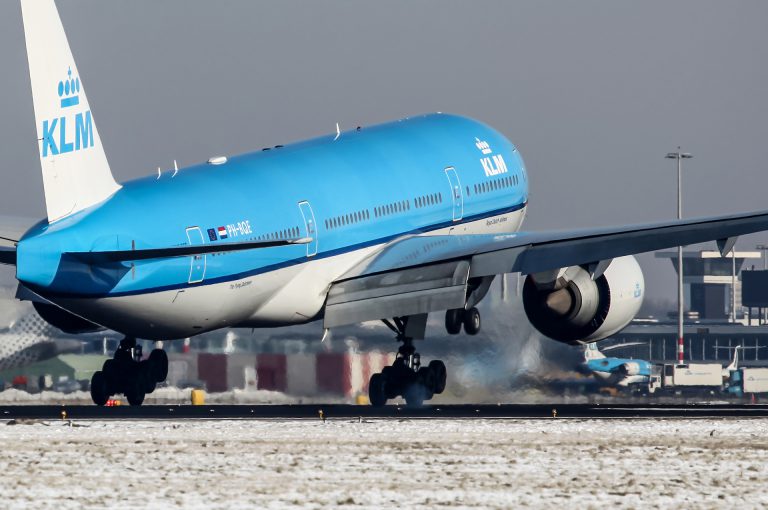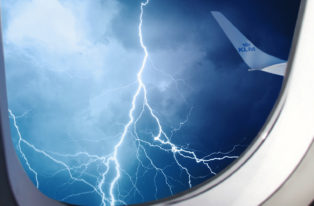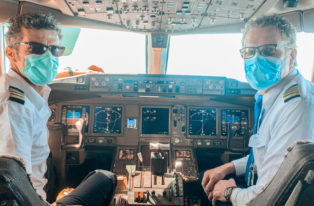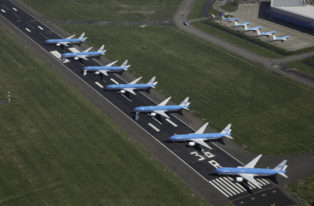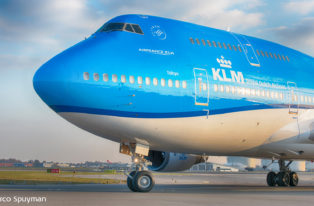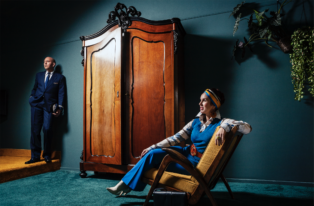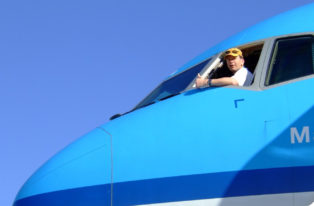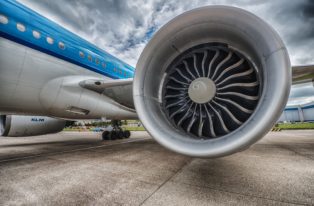6 Tips for Creative Aviation Photography
I’ve often been asked: “What’s the best place at Schiphol Amsterdam for taking photos?” That’s a difficult question to answer because it’s not so much ‘the best place’ in the form of a specific location; the best place is where several elements converge. I can list six tips on how to be creative if you want to take pictures of aircraft.
Tip 1: Get up early
If you want to take amazing shots you have to work for it, and getting up early goes with the territory. My alarm goes off at 04:30 hours in summer, so that I’m ready to take my shots by sunrise. At Schiphol, approaching traffic landing on the Kaag runway is lit beautifully because the sun actually rises facing the runway. The light then shines directly onto the approaching aircraft, and the body and engines are lit perfectly. Once the plane passes you, you can take amazing silhouette photographs if you turn quickly. Underexposing by a few stops can be a solution to heighten the silhouette effect.

Aircraft approaching on the Kaag runway at Schiphol Airport Amsterdam
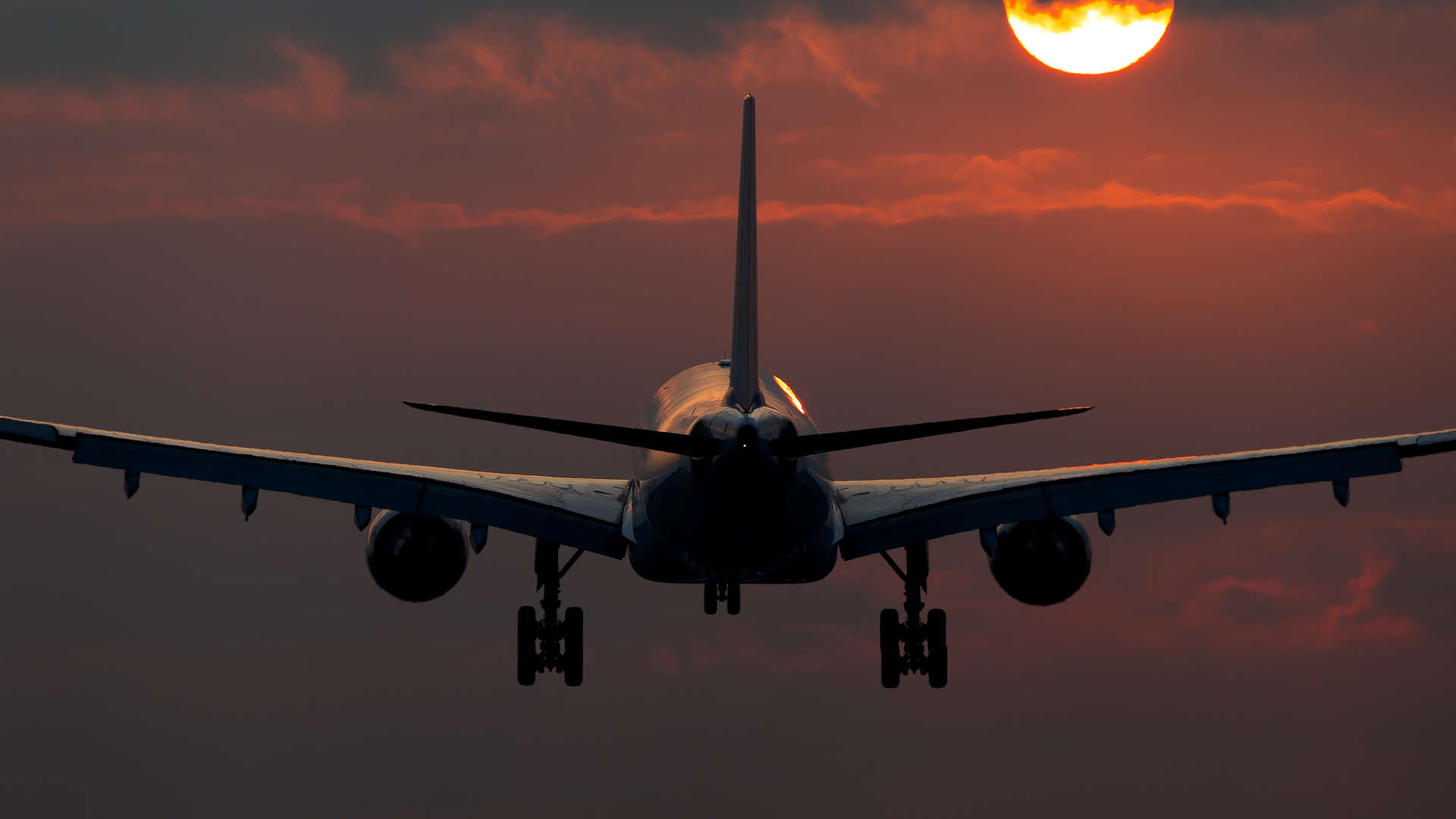
Turning quickly and underexposing by two stops
Tip 2: Brave the cold!
Winter is a great season for photography. The sun stays relatively low throughout the day. As a result, light falls beautifully onto the subject: the aircraft! Dress warmly; if the cold grips you, operating your camera with a steady hand becomes practically impossible. Preferably use gloves that enable your fingers and palms to grip firmly, preventing the camera from falling out of your hands. A flask of hot coffee certainly helps if you plan to be outdoors for several hours.
If you’re lucky, you’ll find a bed of snow. This can be useful because snow serves as a brilliant reflector, giving the belly of the aircraft extra light as the sun reflects off the ground. You can introduce more detail by overexposing by one stop.

A snow-laden sky is grey; by overexposing you can still take detailed photographs.
Tip 3: Water
I love water and the sun – preferably a combination of the two. Why? Because water reflects the sunlight onto the belly of the aircraft. As if I have an assistant holding a massive reflective screen for me.
It also makes a difference if the water is calm or agitated. On a dyke to the south-east of Schiphol there’s a canal that aircraft fly over. You can make good use of this canal, especially when photographing landings. Also fiddle around with your exposure compensation settings; you can experiment with this option depending on the level of the sun. And even if you often shoot into the sunlight there, overexposure by one stop can produce good results. Use an average aperture value (F/6.3 ~ F/8.0) in combination with a fast shutter speed.
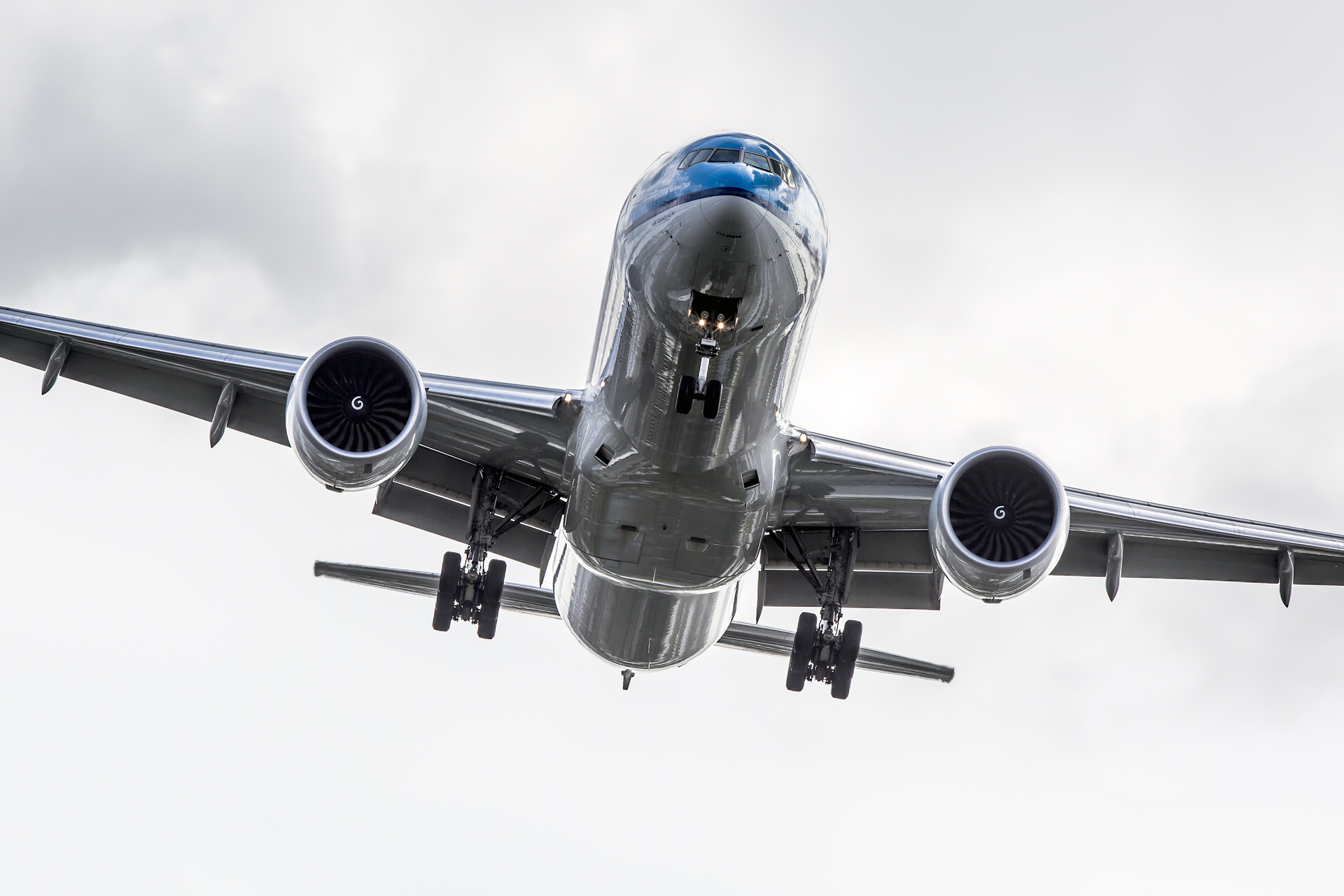
Overexposure by two stops to pick up the sun’s reflection from the water.
[tweet text=”I’ve long since dispensed with the ‘golden rule’ of only taking pictures with the sun behind me.”]
Tip 4: Search for the setting sun
Those of you who cannot find the strength to leave your nest before dawn can always wait till sunset to get the ultimate shot – the setting sun as it dips beyond the horizon can produce amazing images. The low slung, golden rays of light generate a pleasant feeling of warmth in the photographs. Finding a location where you can see the aircraft taking off into the sun can produce brilliant results.
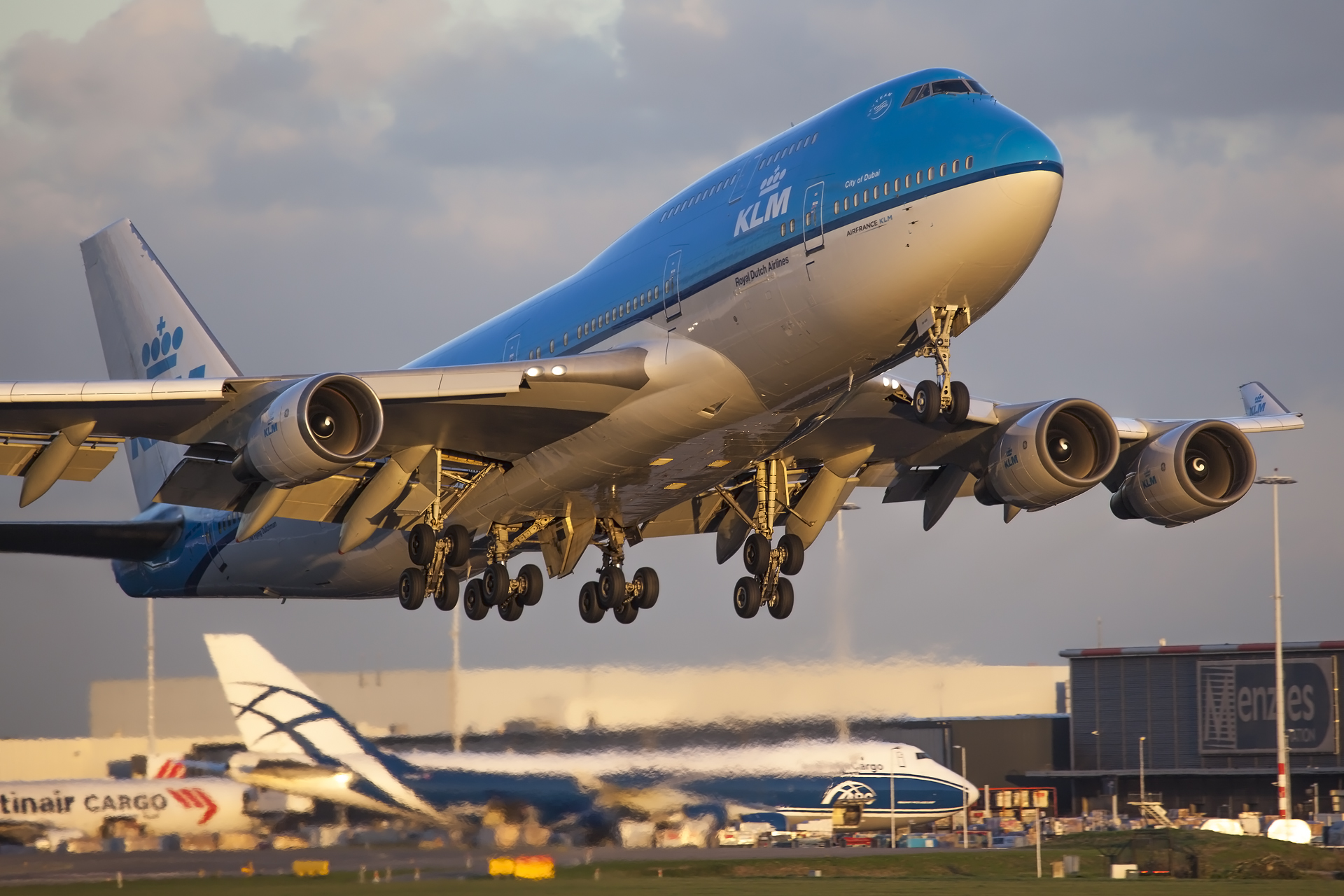
Stray light as the B747 takes to the sky towards the setting sun.
Tip 5: Slow shutter speeds
To introduce speed and action to your photographs, you could try taking some panning shots. You move the camera at exactly the same speed as the subject, keeping it in perfect focus while the background fades. This technique does take some skill in using your equipment, along with loads of practice in advance. Set your camera to the semiautomatic ‘shutter priority’ mode, usually denoted by the letter ‘S’. Start off slowly with a shutter speed of 1/100. The camera calculates the correct aperture value for you. If you get the feeling you have command over this setting, you can explore your skills and raise it to 1/80 or 1/60. If your lens offers this option, deactivate the image stabiliser setting. If you decide to take shots like this, pick a feature on the aircraft to use as your main point of focus. This could be a door or a logo.
This option could come in handy if you photograph propeller-driven aircraft. The slow shutter speed ‘catches’ the spinning propeller blades making the photograph far more dynamic. Otherwise it looks like the aircraft is hanging in mid-air with stationary engines.

The slower the shutter speed, the rounder the propeller blur. For this photo: 1/50.
Tip 6: Know your home base
My home base is Amsterdam Airport Schiphol. I know every corner, every little road and feel like a fish in water when I move around. When I approach the area around Schiphol all my senses become heightened, I see every movement and get a feeling for the light around me. I try to imagine what the day could bring. Make sure that you are familiar with the surroundings where you plan to take pictures so that you know whether you’re allowed there and whether or not it is safe to be there. After all, there’s a lot of traffic in and around a big airport and accidents happen when you least expect them.
Andres is the founder of the Dutch Aviation Photographers Group, also known as DAPG. A social community on Facebook that has enjoyed international acclaim since the start of 2011 in the subculture of plane spotters and aviation photography.
